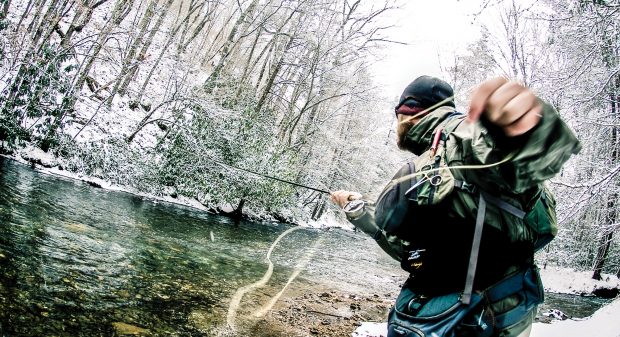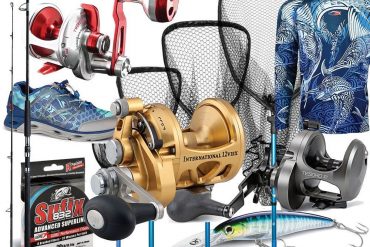
Go deep with big patterns to warm up your winter fishing.
[by Jason Randall]IT USUALLY HITS ME SOMETIME IN MID JANUARY—after the Rose Bowl but before the Super Bowl, and way before March Madness. It starts as a dull fugue that grows with each sunless day. I call it the winter doldrums. Others have dubbed it cabin fever. Whatever you call it, I usually end up sitting at my writing desk, staring out the window, checking the calendar, and counting the weeks until the first spring fishing trip.
I glance at the fly rod on the shelf, placed there sometime around Thanksgiving—set aside but not forgotten in the holiday hoopla that marks the final five weeks of every year. I pick it up, attach the reel, and string the line through the guides. I enjoy the feel of it in my hand. A quiet voice in my head whispers, Why not?
Yes—why not? I head to the river on the first halfway decent day of winter. Once the decision is made, I feel better. After all, it’s a great time to fish. Solitude is guaranteed and the fish are willing, as long as you are.
Although fish feed less in the winter than in the summer, they still do need to eat. And a fish that eats is a fish that can be caught. A fish’s slow metabolism in cold water reduces its energy consumption and slows its digestive tract, but regular meals are a must in order to survive.
While there is a marked reduction in the winter drift—the number of insects and other invertebrates floating in the current as food for waiting trout—piscivorous feeding (eating other fish) is on the rise. Larger fish target smaller fish weakened by the thin energy budget in the winter river, and it’s a great reason to cast streamers.

Brown trout move upstream to spawn in mid to late autumn and often linger in the warmer waters found close to the headwaters on most streams, oftentimes until the following spring. The prespawn movement for cutthroat and rainbows occurs midwinter.
Especially in northern climates, that migration results in a different home range in winter as opposed to summer. Upstream sections that might not strike you as the typical brown trout water you might have fished in the summer hold trout in the winter, so it pays to fish a section of the river farther up from your favorite warm-weather holes.
With that in mind, brown trout are typically loyal to a specific area or home site. It’s where they find comfort and security, and “hole up” between feeding intervals. The ideal home site for brown trout has a slow but steady current. In winter, trout tend to avoid strong currents because the energy expense of fighting a strong current isn’t recouped when there’s a reduced probability of a prey encounter. Since trout can’t make more food sources appear, they have to balance their energy budget. As a result, they become cost conscious and make fewer feeding excursions in the winter compared to summer. If fish incur a net loss of energy, they lose weight and vitality and might become the target of predation or subject to winter kill if a negative energy balance persists for an extended time.
To find a brown trout’s home site, look for stretches of water that average two to four feet deep, with a soft, silted bottom. A logjam or brushy sweeper in those areas makes a perfect home site, offering both concealment and safety. Likewise, large boulders along the edge or bottom of a pool also provide comfort and security.

After identifying a potential home site, approach it from upstream, gradually fishing down to it. Studies show that when large trout leave their home site to begin an initial feeding excursion, they usually start in an upstream direction and linger behind the first structure encountered, often a rock, boulder, branch, or small log. If you wade into position and immediately cast toward a home site, you blow the chance to catch fish 20 yards upstream of the site.

Target structure in the water thoroughly as you work your way downstream. Once you reach the home site, strip your streamer across the front; then target the side and back edges. If you strike out, move to another site. It’s important to move often when streamer fishing to cover water and potential sites, but if I’m fond of a particular place, I’ll…




